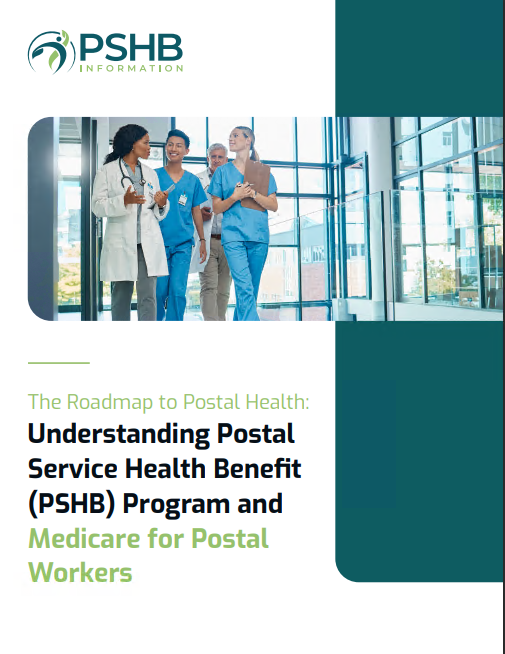Key Takeaways
- The 2024 Open Season for Postal employees marks a unique opportunity to choose or update your health coverage under the new Postal Service Health Benefits (PSHB) program.
- With changes coming in 2025, it’s essential to understand your options, particularly if you or a family member are Medicare-eligible, as this can impact your coverage requirements.
Understanding PSHB Open Season: What It Means for You
The 2024 Open Season brings major changes for postal employees, annuitants, and their families, shifting from the Federal Employees Health Benefits (FEHB) program to the new Postal Service Health Benefits (PSHB) program. For anyone looking to adjust their health coverage, Open Season is the ideal window to enroll, make changes, or confirm that your current plan still meets your needs. With health care being such a central part of life, now is the time to get familiar with your options and requirements to ensure you have the coverage you need.
Open Season Dates and Duration
Open Season for the PSHB program runs from November 11 to December 9, 2024. During this time, you’ll be able to explore and select a health plan that best fits your needs, with any changes taking effect on January 1, 2025. Even if you’re already covered under the FEHB, it’s wise to review your options under the PSHB, as there are differences that may impact your coverage and costs.
Automatic Enrollment: What’s Changing?
One of the big changes with the PSHB is automatic enrollment. If you’re currently enrolled in an FEHB plan, you’ll be automatically transferred to a comparable PSHB plan in 2025 unless you actively choose a different plan during Open Season. This automatic enrollment ensures no one accidentally loses coverage, but it’s still highly recommended that you review your options. While automatic enrollment may make the transition easier, the PSHB offers a variety of plans, and it’s worth the time to make sure your health care preferences and financial priorities are still aligned with your choice.
The Medicare Requirement: Do You Need to Enroll?
A unique aspect of the PSHB program for some Postal retirees is its Medicare Part B enrollment requirement. If you or a covered family member are eligible for Medicare, it’s important to understand how this requirement may affect you. Generally, if you retired on or before January 1, 2025, and haven’t already signed up for Medicare Part B, you are not required to enroll to maintain your PSHB coverage. But for Medicare-eligible retirees who leave employment after this date, enrolling in Part B may become necessary to retain PSHB coverage.
This Medicare integration is designed to coordinate federal benefits with Medicare, which can help reduce out-of-pocket expenses. However, even if Medicare enrollment isn’t required for your specific situation, understanding how Medicare works with PSHB can be beneficial when making your Open Season selections.
Exploring PSHB Options: What Types of Plans Are Available?
The PSHB program provides various health plans, giving postal employees and retirees options to choose a plan that fits their medical needs, financial preferences, and overall lifestyle. Here’s a brief rundown of some options you’ll typically find in the PSHB lineup:
1. Health Maintenance Organizations (HMOs)
HMOs are structured networks where you’ll choose a primary care provider and typically need referrals to see specialists. They’re ideal for those who prefer working within a network and have generally lower premiums and out-of-pocket costs.
2. Preferred Provider Organizations (PPOs)
If flexibility is a priority, a PPO might be more appealing. These plans don’t require referrals for specialists and allow you to see providers outside the network, though out-of-network visits may come at a higher cost.
3. High-Deductible Health Plans (HDHPs)
HDHPs have lower monthly premiums but come with higher deductibles. They’re often paired with Health Savings Accounts (HSAs), which let you save pre-tax dollars for future health expenses. HDHPs can work well if you’re in good health and want to build a healthcare savings cushion.
4. Consumer-Driven Health Plans (CDHPs)
CDHPs combine traditional health coverage with a savings option like an HSA. These plans encourage participants to play an active role in managing healthcare expenses, often making them attractive to those who prioritize control over costs.
Each plan type offers different advantages, so consider your current health, anticipated medical needs, and financial situation when making your selection.
Assessing Your Current Health Needs: Key Questions to Consider
Choosing the right PSHB plan starts with understanding your personal health needs. Ask yourself a few key questions:
-
Do you have ongoing medical needs or prescriptions? If you take regular medication or need frequent medical appointments, look at plans that offer good prescription coverage and lower co-pays for office visits.
-
Do you anticipate any major health expenses? Thinking ahead can be crucial. If you’re planning for a surgery or other high-cost procedure, a plan with lower out-of-pocket maximums could save you money.
-
Do you prefer specific providers? If you have trusted doctors or specialists, make sure your preferred plan includes them in its network or, if not, allows you to see them without excessive out-of-pocket charges.
Taking these questions into account can help you pinpoint which PSHB plan best aligns with your healthcare needs.
Special Considerations for Family Coverage
If you’re covering dependents or family members, make sure to assess their needs separately from your own. For instance, if you have children who may need pediatric care or specialty services, look for plans that include robust family benefits and coverage. The PSHB program also offers family coverage options that can accommodate different medical needs within one plan, helping you find an option that works for everyone in your household.
Avoiding Surprises: Costs to Keep in Mind
When evaluating PSHB plans, it’s helpful to consider costs beyond the monthly premium. Here are some expenses that could impact your budget:
- Deductibles: The amount you’ll need to pay out-of-pocket before the plan starts covering most services. If you rarely use healthcare, a higher deductible may be manageable.
- Co-pays and coinsurance: These are charges you pay when receiving services. Plans with higher monthly premiums may have lower co-pays, so check these to see what works best for your needs.
- Out-of-pocket maximums: This is the total you’d pay for covered services in a year. Once you hit this limit, the plan covers additional costs. If you anticipate higher medical needs, a plan with a lower out-of-pocket maximum might make sense.
Choosing the Right PSHB Plan: Tools and Resources
The U.S. Office of Personnel Management (OPM) website is a valuable resource for exploring available PSHB plans. During Open Season, they offer tools that compare benefits, costs, and coverage details across the various plans. Taking advantage of these tools can simplify decision-making and help you make an informed choice.
Common Mistakes to Avoid
As you navigate the PSHB Open Season, here are some common mistakes to watch out for:
-
Ignoring plan comparisons: Skipping a detailed comparison may lead to unexpected costs down the road. Use OPM’s comparison tools to weigh your options.
-
Not considering Medicare integration: If you’re Medicare-eligible, this is a big one. Understanding how your PSHB plan interacts with Medicare could save you from paying double or missing out on coverage.
-
Forgetting to review dependents’ coverage needs: Especially if covering a spouse or children, make sure the plan offers comprehensive benefits for everyone.
Planning for 2025 and Beyond
This Open Season doesn’t just affect your coverage in 2025—it’s an opportunity to set yourself up for peace of mind in the coming years. While health needs can change, having a plan in place that works for your life today and your future goals will ensure you’re well-covered, no matter what comes your way.
Making the Most of Your PSHB Plan Selection
In summary, Open Season for the PSHB is the ideal time to explore, compare, and select a health plan that meets your needs as a postal employee, retiree, or family member. With changes in Medicare requirements and the diversity of plan types, reviewing your options can set you up for both cost savings and health security in the years to come. Take advantage of the tools available, consider your personal health needs, and prepare to start the year with coverage that suits you.








